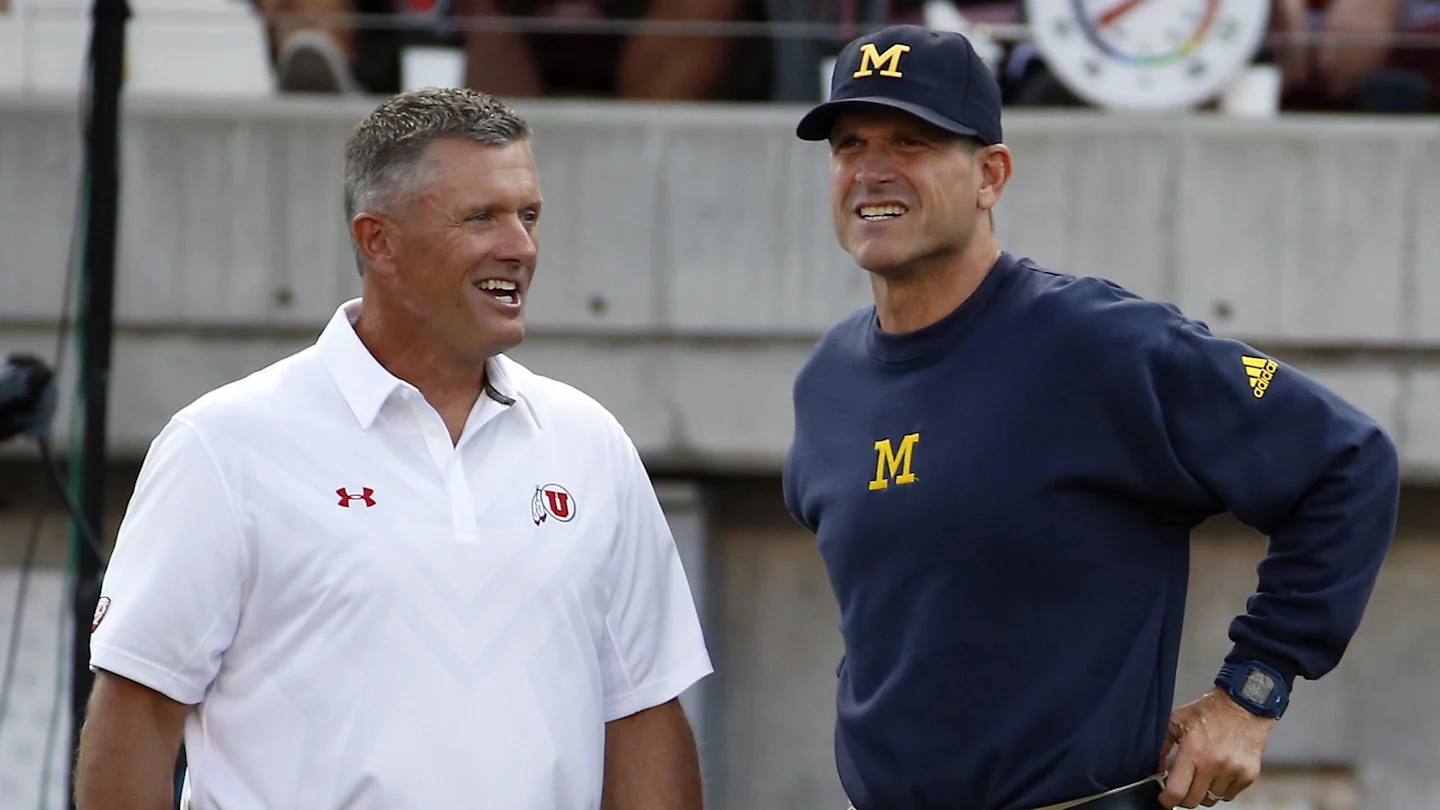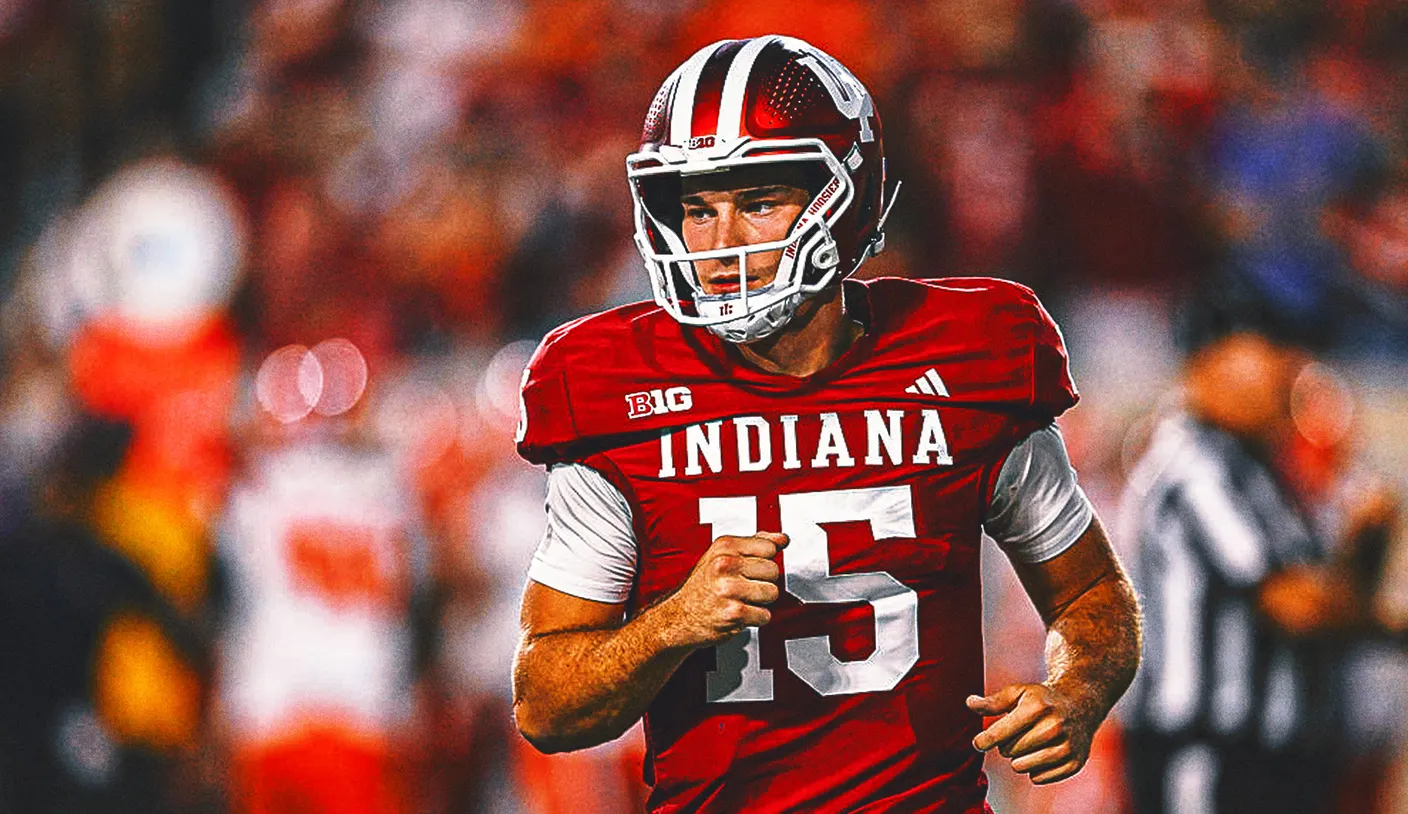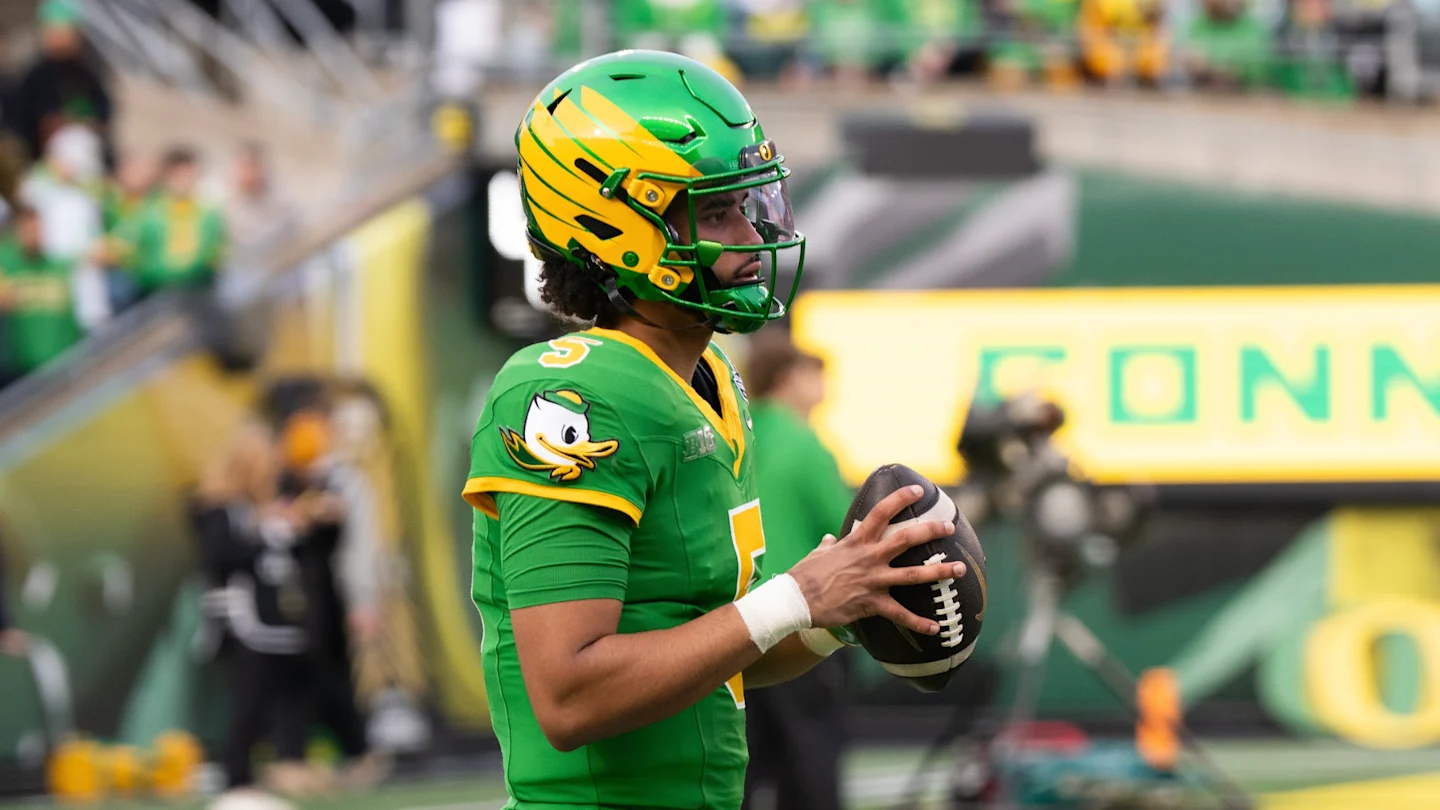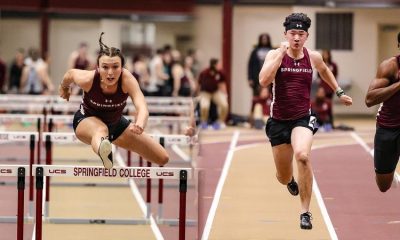NIL
College football's hopes to rein in transfers with one portal window gaining momentum


With the House v. NCAA settlement finally approved, the people in charge of college football are turning quickly to the sport’s next potential rules changes. At the top of the list: moving to a single transfer portal window for football, instead of the current two in December and April.
At SEC meetings last month, Georgia coach Kirby Smart called it “the biggest decision that has to be made in college football right now, by far, to me.”
Advertisement
During a call next Monday, its first meeting since the House settlement’s approval, the Football Bowl Subdivision Oversight Committee is expected to have a deep discussion on a single portal window. The hope is to come out with a recommendation and begin a path to solidify a change before the upcoming season.
“I’m confident we’ll get there,” committee chair and Buffalo athletic director Mark Alnutt told The Athletic.
But when would that single window be? And what would it mean for players and teams?
According to several people involved in the process, granted anonymity in order to describe the state of discussions before a formal decision, early January is the option with the most momentum; one person described it as an 80-20 split. At its annual convention this January in Charlotte, the American Football Coaches Association proposed the window run Jan. 2-12 beginning in 2026, following a unanimous vote of dozens of FBS head coaches in attendance.
That date would allow most schools to finish the season with their full team, a response to rising numbers of opt-outs from bowl games and even College Football Playoff teams losing players off their roster. It would also help set teams in place heading into spring practice, especially as rosters begin to shrink with the House settlement roster limits.
“I want January,” Texas Tech head coach Joey McGuire said. “I want to get my team, and I want to roll and get ready for winter conditioning, spring football, and take that team into the fall.”
The institution of a transfer window only restricts when players can enter the portal. They aren’t required to pick a new school in that time, though their prospective schools’ academic calendars may create a deadline.
One player agent, granted anonymity to discuss his work with players, told The Athletic he prefers January and tells his clients to avoid the spring portal anyway unless they’re an elite athlete. The agent was concerned that a later portal could cause kids to check out and create a limbo period, or that it would open up even more opportunities for springtime tampering.
Advertisement
“Kids are going to know they’re leaving before they even talk with their coaches,” the agent said. “With January, kids are home for the holidays, talk it over with your circle, people you trust, and if you leave, you can find a school and enroll in time for class. If it’s spring-only, you may have kids fall into a mental ditch.”
Not everyone is on board with a January portal window. Multiple people involved in the process said some power conference schools prefer spring, especially those whose academic calendars run on a quarter system and start class earlier in January, before the portal closes.
There’s also the issue of the portal opening and closing before the College Football Playoff ends. This past season’s national championship game took place on Jan. 20. Current rules give players an extra five-day portal window if their season runs long. Another player agent told The Athletic a client of his couldn’t schedule a transfer visit to Columbus in January because the CFP schedule bumped events around.
“If we didn’t have the second transfer portal window, it’s very, very difficult,” Ohio State coach Ryan Day said in February on “The Joel Klatt Show.” “We’re trying to make decisions about next year, yet our year isn’t even done yet. So that affects your current roster, and it’s just messy. I think you’ve gotta have two portals unless you’re finishing the season sooner.”
Smart, who supports a January window, said top programs would just have to handle it for the sake of everyone.
“It’s really hard to be playing in a championship setting and having to deal with that,” he said last month. “When I brought that up as a complaint or a problem, I was told there’s no crying from the yacht.”
A move to a single portal would be the latest in a long list of rule changes since 2021, when NCAA committees approved a one-time transfer with immediate eligibility in football and basketball. When players began entering the portal during the season, coaches asked for windows to restrict their movement. Fall and spring sports got two windows, while winter sports got one because they take place over two semesters. All sports’ windows lasted 60 days.
Advertisement
Then in late 2023, a series of lawsuits and court rulings forced the NCAA to allow players an unlimited number of transfers without sitting out, sparking a surge of player movement and leading to calls from coaches to shrink the windows they’d asked for. NCAA committees changed the windows from 60 to 45 to now 30 days over the past few years. A single 10-day portal in football would be the most dramatic change yet.
Athlete advocacy groups have pushed back on moving to a single portal window. Oversight committee members have tried to emphasize the benefits of stability. Messages left with multiple players on the Football Student-Athlete Connection Group were not returned.
“A single portal window likely reduces players’ leverage by limiting transfer timing options,” said Darren Heitner, a lawyer who represents numerous players. “Two windows allow more negotiation flexibility. One could rush decisions, especially for non-stars.”
There has also been discussion on the oversight committee about removing the automatic 30-day portal window for players who have a head coaching change, the theory being it would give a new coach an opportunity to convince players to stay before the regularly scheduled portal opens. But there is some concern that going too far in shrinking the portal could invite a legal challenge and create more problems than it solves.
Some also question whether portal windows matter. There is nothing to stop players from unenrolling at one school and enrolling at another like a normal student. In January, former Wisconsin cornerback Xavier Lucas, represented by Heitner, enrolled at Miami after Lucas said Wisconsin refused to let him in the portal. Wisconsin alleged Miami had impermissible contact with Lucas because he hadn’t gone in the portal and that he’d signed a two-year name, image and likeness deal with the school based on the pending House settlement.
“Enforcement is shaky, schools can block portal entry, even if it is against NCAA rules, as seen with Lucas,” Heitner said in an email to The Athletic. “Wisconsin appears to have escaped punishment, at least for the time being, despite the clear rules violation. He is eligible at Miami and practicing with the team.”
The oversight committee is also discussing changing spring football around that window, with a focus on an AFCA proposal of NFL-style OTA practices that would add six non-padded practices to the existing 15 practices, with the ability to spread the 21 workouts over two different flexible periods from January to June. If a single portal were instituted in the spring, this change would allow schools to hold more practice after the spring window closed. But other members of the committee told The Athletic they’re concerned about the mental strain of putting players through multiple spring practice sessions.
Advertisement
It’s also not yet clear who the oversight committee’s portal recommendation would go to. The Settlement Implementation Committee (made up of 10 athletic directors) handles post-House rules, and the NCAA is undergoing a larger governance change. One person involved in the discussions said the process is still under discussion.
Previous attempts to move to a single portal window have been stopped by athlete pushback, but the approval of the House settlement has college football’s leaders trying to regain control of the sport. Uncontrolled player movement is the most visible issue with the current system in the eyes of many coaches and fans. Momentum for a single window is strong, wherever on the calendar it lands.
“Do I think it’s better for a player? Not necessarily,” said the second agent. “But it makes logical sense for the sport.”
(Photo: Peter Aiken / Getty Images)
NIL
Steve Spurrier reveals his concern level for the state of college football

Steve Spurrier is never shy about voicing his thoughts on college football. And he’s not a huge fan of a more recent development in the last few years. Well, a few of them.
There have been plenty of changes to the sport in that timeframe. The implementation of new transfer portal windows, reform of the transfer process in general, the introduction of NIL legislation and more.
Spurrier recently joined Another Dooley Noted Podcast and opened up on the state of the sport. He was blunt.
“Yeah, I wish all this had not happened, but it is what it is now,” Steve Spurrier said. “I don’t know how they change it, because they don’t know how to do it either. There have got to be smarter people than me that can look at it and say, ‘Why don’t we put some like… you’ve got to stay two years somewhere.’ Or just anything. And every school gets $20 or $22 million and that’s it, you can’t spend more than that. And you’ve got to have accounts of it.”
In other words, let’s rein in the free transfer era a bit. And let’s level the playing field when it comes to NIL spending. The alternative is the kind of chaos we’ve seen unfold in the sport.
For Steve Spurrier, there are some obvious things that should be cleaned up. For one, it’s impossible for most people to get a handle on what’s going on in the NIL world.
“I heard Ricky Neuheisel talking on his radio show the other day, he said, ‘College football is the only sport in the world, or the only business in the world you don’t have to tell anybody how much money you make,’” Spurrier said. “It’s supposed to be public knowledge.”
Steve Spurrier provided two high-profile examples. Both came from the SEC.
“Nobody knows what (DJ) Lagway got,” Spurrier said. “They asked me, ‘What did Lagway get?’ I said, ‘I think three, four or five million. Arch Manning supposedly got six million a year. So I can’t put an exact number on it because they don’t tell you.”
For those in charge in the sport, the lack of transparency is a feature, not a bug, Spurrier said. Coaches have an easier time managing things if it’s not readily apparent that one player is getting paid far more than another.
“Obviously they tell the players don’t tell anybody how much you got now, because we can’t give everybody that much,” Steve Spurrier said. “So yeah, it’s just what it is. But like people say, the attendance is good as ever, the TV ratings are as good as ever. So people are watching and there’s great interest in it, I will say that. But just have some rules somehow. You would think they would want to do that, but they haven’t done it yet.”
NIL
Calls mount for College Football Playoff to make drastic changes after Saturday’s games

ESPN analyst and former head coach Nick Saban ruffled a few feathers earlier in the week, but could not hand out some “I told you so” takes.
Saban is one of many advocates of some significant change in the College Football Playoff system who saw Saturday’s results validate a point he was making all week. The system, fairly obviously, is broken.
Two Group of Five teams reached the CFP after the ACC stumbled, fumbled, and tumbled to 8-5 Duke winning the league. After Saturday’s results for Tulane and James Madison, it’s fair to wonder: what on Earth were they doing in the Playoff?
Ole Miss waxed Tulane 41-10 in a game that wasn’t even as close as its lop-sided score. Oregon likewise easily controlled JMU, rolling up a 34-6 halftime edge before taking the easy victory. After an fairly electric Oklahoma/Alabama showdown on Friday and a defensive battle between Miami and Texas A&M on Saturday morning, the CFP suddenly fell very, very flat.
Enter Saban having built a solid base for his “I told you so” platform. Back on Thursday, on The Pat McAfee Show, Saban rebuked the entire idea of G5 teams in the Playoff. “Would we allow ther winner of the AAA baseball league… in the World Series playoffs?” asked Saban. “That’s the equivalent of what we do when JMU gets into the College Football Playoff and Notre Dame doesn’t.”

Likewise, Urban Meyer made similar arguments last week. On The Triple Option podcast, he advocated for a qualification test for G5 teams– they should play three teams in the top 50 to qualify. “You’re telling the [Notre Dame] Fighting Irish to sit home and James Madison’s going?” asked Meyer. “The better team is supposed to be in the game.”
It was certainly clear on Saturday that the better team was not actually in the game. Joe Tessitore and Jesse Palmer actually made that point clearly in broadcasting the Ole Miss/Tulane blowout.
“This has been a completely non-competitive game,” Tessitore said. “If this were Notre Dame, what kind of game would we have had?”
Jesse Palmer stated, “Imagine how big this environment already is… and what that would have looked like if Notre Dame had that opportunity…. I think this is something that the committee needs to continue working out as they press forward.”
Palmer and Tessitore made a more moderate case, essentially adovicating allowing one team to make a Playoff appearance, but not a second.
That said, considering the trouble that both G5 teams had, a separate bracket might be the only way to make the Playoff experience tenable for Group of Five schools.
With power conferences going to nine-game schedules, it’s also less and less likely that big schools will want to play top Group of Five foes.
NIL
Grimsley’s Faizon Brandon cemented his legacy in the best way possible: on the field

Faizon Brandon’s decision to return to the field late in his senior senior was eerily similar to the decision made by another Grimsley player just five seasons earlier.
“I’m very glad to end it the right way,” he said.
Travis Shaw, who at the time was ranked as high as the No. 4 defensive lineman in his senior class class, was — like Brandon — coming off a state championship the year before. Also like Brandon, Shaw was injured early in the year — Shaw missed all eight of the first games to start the 2021 season, returning to the field just in time for senior night and a playoff run.
But Brandon, the nation’s top-ranked quarterback and 2024 N.C. Gatorade Player of the Year, had to have had more on his mind than Shaw did.
After all, a lot has changed in five years.
Shaw had to weigh the possibility of returning to the field and getting re-injured and how that might affect his ability to play right away as a freshman.
The birth of the “NIL era” in college football means players have a real financial risk.
Brandon’s injury — a ligament on his right thumb — was in an area where you can’t be too careful.
“Faizon,” who has earned the first-name-only recognition statewide that few players reach in four years in any sport, was also the athlete who challenged the state’s NIL rules and won.
If anyone understood what was at stake, he did.
But sports are not made with the spirit of accounting.
They were made for competitors.
“When he goes out and everybody that thinks they know says ‘You shouldn’t come back.’ I got phone calls saying he had already moved to Tennessee. I thought that was funny because he was in my office when I got that call,” Grimsley coach Darryl Brown said. “And everything else, you know, like he’s done, he’s not playing at Grimsley High School anymore. And he does everything within his power to get himself back to be a part of this run with his teammates. He could have said, I’m good, I already won a state championship.”
In his final year, he returned to the playoffs after missing all but the season opener, wasn’t quite himself. Yet, while playing a total of just six games, and throwing 11 touchdowns, he also walked away as a two-time N.C. High School Athletic Association champion and a two-time MVP.
“Playing high school football in anywhere, playing varsity high school football, for anybody listening, it means something,” Brown said. “It matters. It’s important. A lot of times everybody wants to speed stuff up. But that school you’re at and the teammates you’re with, and the coaches you play for, that matters. And you can see that it means something to our kids.”
He had all the reasons, probably millions if you count every potential dollar, to not play again for the Whirlies. He would have still walked away as one of the best North Carolina high school quarterbacks since the turn of the century.
But he didn’t go out as a healthy scratch.
He went out as a two-time champion, two-time MVP, and his legacy at Grimsley — like Shaw’s — was cemented where it should have always been: on the field.
“I was just trying to give it everything I got, you know, go out there and lay it on the line,” Brandon said. “That was the biggest thing that I felt whenever I came to realization that it would be in my last high school game is just giving it everything I got.”
Copyright 2025 by Capitol Broadcasting Company. All rights reserved. This material may not be published, broadcast, rewritten or redistributed.
NIL
Michigan urged to hire veteran college football coach amid coaching search

The search is on for Michigan to not just find a quality replacement for Sherrone Moore as its next head football coach, but more importantly to scout a figurehead who will bring stability to a program that badly needs it.
And despite the Wolverines arriving late to the college football coaching carousel, with seemingly all the best options already accounted for, a recent resignation at a major program could actually help the school at this crucial moment.
The departure of coaching veteran Kyle Whittingham from Utah could spell a blessing in disguise for Michigan, ESPN broadcaster Matt Barrie said on his eponymous show.
What Michigan needs right now

“What they need is Kyle Whittingham. They need Kyle Whittingham,” Barrie said on his college football program of Michigan’s ongoing search.
Not only is Whittingham a coaching figure who has been a proven winner and fielded consistently-competitive teams. He also has a very good reputation.
“They need Whittingham, who ran a good, clean program at Utah,” Barrie said.
“I get it. He’s older. He’s not the sexiest hire in terms of name recognition and youth. But you need a guy to steady that ship.”
Michigan needs to be steadied
The ship has most certainly not been steady these last couple years.
Whether it was the Covid-era recruiting scandal under Jim Harbaugh, the sign-stealing affair connected to former assistant Connor Stalions, or the shocking removal of Sherrone Moore following an alleged relationship with a staffer that resulted in him facing criminal charges, it’s clear Michigan needs a reboot.
And yet, despite everything, it’s also been quite a run for the Wolverines for one very good reason, as the program won its first national championship of the century under Harbaugh’s direction in 2023.
But given everything that happened during and since then, change is in order.

So, is Whittingham the answer?
Judging by his own recent remarks, he very well could be.
Following his own departure from Utah, the veteran coach very much gave the impression that he is still interested in patroling a sideline somewhere.
“Who knows? We’ll see, I guess, stepping down, stepping away, and re-evaluate things and see where we’re at. I’m a free agent. I’m in the transfer portal,” Whittingham told reporters.
“Like I said, I’m at peace and I did not want to be that guy that overstayed his welcome with people just saying, ‘Hey, when’s this guy gonna leave?’ That was not my intention, ever. I hope I didn’t do that. I’m sure with some people, I did do that, but the timing to me, the timing is right.”
He is a proven winner
Whittingham is the all-time winningest coach in Utah football history, going 177-88 during his 21 seasons with the program.
Michigan is looking for known commodity, although at 66 he may be on the older end of the spectrum as the school considers what it hopes will be a long-term solution.
But having an experienced head coach suddenly come on the market at this exact moment must have Michigan wondering if he could be the answer, as most of the other high-profile names are already taken or staying put where they are, getting lucrative extensions to prevent their fleeing.
Known as someone who has recruited and fielded some punishing defenses over the years, and whose teams have traditionally dominated at home, Whittingham could be the man for the job.
What the markets are saying
Whittingham remains the favorite to become the next head coach at Michigan, sitting out in front with 22 percent odds to take the job, according to the prediction market Kalshi.
Washington head coach Jedd Fisch sits in second with 16 percent likelihood, and Louisville head coach Jeff Brohm places third at 14 percent.
(Barrie)
Read more from College Football HQ
NIL
2025 CFP Odds: Lines, Spreads for Each Quarterfinal Game

We’re on to the quarterfinals of the College Football Playoff.
Let’s look at the odds for the second round at DraftKings Sportsbook as of Dec. 21.
This page may contain affiliate links to legal sports betting partners. If you sign up or place a wager, FOX Sports may be compensated. Read more about Sports Betting on FOX Sports.
WEDNESDAY, DEC. 31
No. 10 Miami vs. No. 2 Ohio State
Cotton Bowl
Spread: Ohio State -10
Moneyline: Ohio State -360, Miami +285
O/U: 41.5
What to know: Miami won a defensive slugfest in the first round at Texas A&M, and now it gets the defending champion Buckeyes, with a spot in the semifinals on the line. What has to worry Hurricanes fans is that Miami scored just 10 points against the Aggies on Saturday, a middle-of-the-pack defensive team. Ohio State has the best defense in the country, only allowing more than 10 points twice this season. No team has scored over 16 on the Buckeyes.
THURSDAY, JAN. 1
No. 9 Alabama vs. No. 1 Indiana
Rose Bowl
Spread: Indiana -7
Moneyline: Indiana -258, Alabama +210
O/U: 48.5
What to know: Would you believe that the Hoosiers are a 7-point favorite over mighty Alabama? It’s a new era in college football. The Tide went to Oklahoma and knocked off the Sooners in the first round of the CFP, and now they get a date with undefeated Indiana, the top team in the country. Indiana will trot out Heisman winner Fernando Mendoza at quarterback, and the Hoosiers have scored 55 points or more six times this season.
No. 6 Ole Miss vs. No. 3 Georgia
Sugar Bowl
Spread: Georgia -7
Moneyline: Georgia -270, Ole Miss +220
O/U: 56.5
What to know: Ole Miss dominated Tulane in the first round of the Playoff, jumping out to a 41-3 lead before winning 41-10. Now, the Rebels get another shot at the Bulldogs, who they lost to back on Oct. 18 in Georgia, 43-35. It won’t be a cakewalk for the Bulldogs, who trailed 35-26 in the third quarter of that game before scoring the final 17 points to eke out an 8-point win.
No. 5 Oregon vs. No. 4 Texas Tech
Orange Bowl
Spread: Oregon -1.5
Moneyline: Oregon -120, Texas Tech +100
O/U: 52.5
What to know: Oregon did what many thought it would do in the first round, and that’s rout James Madison. The Ducks led 34-3 before cruising to a 51-24 victory, setting up a date with Texas Tech on New Year’s Day. OU still has a single loss to its name this season, a 30-20 defeat at the hands of No. 1 Indiana on Oct. 11. The Red Raiders also have only one loss on the year, falling at Arizona State back on Oct. 18.
Want great stories delivered right to your inbox? Create or log in to your FOX Sports account, and follow leagues, teams and players to receive a personalized newsletter daily!
NIL
Oregon Ducks Playoff Uniforms Instantly Steal the Show

EUGENE – The Oregon Ducks’ uniforms stole the spotlight in the first round of the College Football Playoff. Long celebrated for their innovative Nike designs, the Ducks may have unveiled their most striking combination yet, paying homage to their classic colors while adding fresh, bold details.
As Oregon takes the field against James Madison in Autzen Stadium’s first-ever playoff game, fans and analysts alike struck by the uniform combination and how they add to the pageantry. From the gleaming helmet to the eye-catching cleats, every element of the look was designed to make a statement. In this historic debut, it did just that, reinforcing Oregon’s reputation as the gold standard in college football style.





Oregon’s Uniforms Make Big Statement
The team is wearing a green “Gang Green” Generation O jersey, paired with a glossy green helmet featuring a yellow wing, yellow pants, green undergarments with yellow accents, and yellow-and-green ombre cleats. A College Football Playoff patch sits on the right side of the jersey, just above Oregon’s Nike Swoosh, complete with the logo and “Playoff First Round Presented by Allstate.”
The uniforms also made history – the first time that solid yellow wings were featured on an Oregon helmet in program history. The green helmet, green jersey, yellow pant is a combination that has been worn only six times in program history in the modern era.

Oregon’s uniforms aren’t just cool designs that go viral on social media, they’re a representation of the Ducks’ national brand. Not only do the new uniforms reflect the program’s innovative culture and performance identity – the impact on recruiting is undeniable. It’s not just fashion; it’s strategy and branding.
The electricity in Autzen Stadium is palpable for the postseason game. A true home field advantage, the fans in Eugene know how to turn up the decibel levels. Ducks fans have turned Autzen into a house of doom for opponents who make their way west. The Ducks have an impressive 25-2 record in Autzen Stadium under coach Dan Lanning. The Ducks are 54-4 at home since the start of the 2017 season.
If the Ducks beat James Madison, they will play the No. 4 Texas Tech Red Raiders in the quarterfinals at the Orange Bowl on Jan. 1 in Miami. Oregon is making its third College Football Playoff appearance overall and is one of just four teams (Georgia, Indiana, Ohio State) to make the field each of the last two years.
A win would hive Oregon its first playoff win since since beating Florida State in the CFP Semifinal at the Rose Bowl on Jan. 1, 2015. It also would send Oregon to its first-ever Orange Bowl appearance.
Holiday heat. @CFBPlayoff First Round uniform combo for @OregonFootball. #GoDucks pic.twitter.com/FcWBbbRLbT
— GoDucks (@GoDucks) December 18, 2025
Oregon coach Dan Lanning spoke to how the senior leaders are stepping up before the playoff.
“Guys are excited about the opportunity, but I think it’d be wrong to say that the preparation is different this week than any other week, right? Yes, the game’s different. We all feel that. We recognize that, that it’s different. But it’s not like guys are like, okay, let’s work hard now. They’ve been working hard, right? You work hard to get into this moment, and then it’s about maintaining that level, that standard as you approach games like this,” Lanning said.

MORE: Oregon Ducks Lose Receiver To Transfer Portal Amid Injury Updates
MORE: Oregon Ducks Uniforms Flex The Power Of A National Brand In Playoff Spotlight
MORE: Oregon Ducks Intriguing Injury Report vs. James Madison
SIGN UP FOR OUR NEWSLETTER HERE!
JMU Quarterback Alonza Barnett III Talks Oregon’s Uniform
JMU quarterback Alonza Barnett III on playing in an environment like Oregon’s Autzen Stadium. pic.twitter.com/aG4KviRIeh
— Catie Harper (@CatieHarper) December 15, 2025
JMU’s starting quarterback Alonza Barnett III gave an unexpected shoutout to the Ducks, further highlighting Oregon’s national brand not only through their play throughout the years, but also in their iconic uniform designs.
“They had the flashy jerseys, Marcus Mariota, Darren Thomas, Darren Carrington, Kenjon Barner, a bunch of people. I was one of those kids who grew up watching Oregon. And so, this is an environment you dream of playing in. If you are who you say you are, you can’t shy down when the lights are bright,” Barnett added.
The Ducks look to slow Barnett III, who has thrown for 2,533 yards and 21 touchdowns this season.
-

 Motorsports2 weeks ago
Motorsports2 weeks agoSoundGear Named Entitlement Sponsor of Spears CARS Tour Southwest Opener
-

 Motorsports2 weeks ago
Motorsports2 weeks agoDonny Schatz finds new home for 2026, inks full-time deal with CJB Motorsports – InForum
-

 Sports3 weeks ago
Sports3 weeks agoMen’s and Women’s Track and Field Release 2026 Indoor Schedule with Opener Slated for December 6 at Home
-

 Rec Sports2 weeks ago
Rec Sports2 weeks agoBlack Bear Revises Recording Policies After Rulebook Language Surfaces via Lever
-

 Rec Sports2 weeks ago
Rec Sports2 weeks agoHow Donald Trump became FIFA’s ‘soccer president’ long before World Cup draw
-

 Rec Sports2 weeks ago
Rec Sports2 weeks agoDavid Blitzer, Harris Blitzer Sports & Entertainment
-

 Motorsports2 weeks ago
Motorsports2 weeks agoJR Motorsports Confirms Death Of NASCAR Veteran Michael Annett At Age 39
-

 Motorsports2 weeks ago
Motorsports2 weeks agoRick Ware Racing switching to Chevrolet for 2026
-
Sports2 weeks ago
Elliot and Thuotte Highlight Men’s Indoor Track and Field Season Opener
-
Sports2 weeks ago
West Fargo volleyball coach Kelsey Titus resigns after four seasons – InForum





































